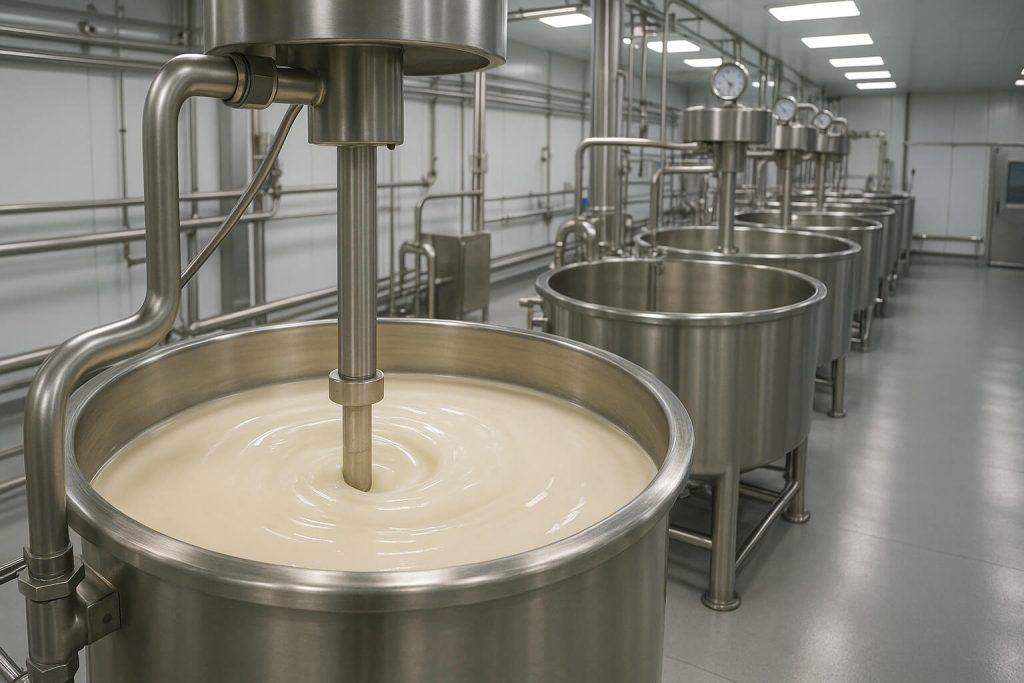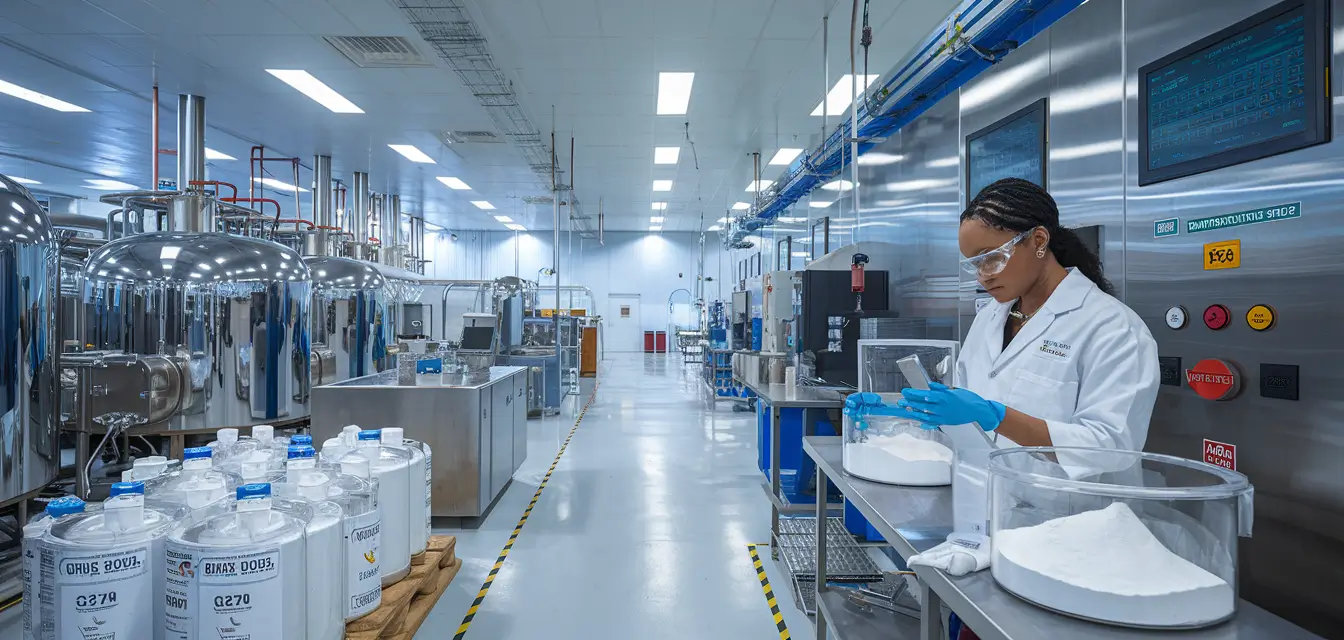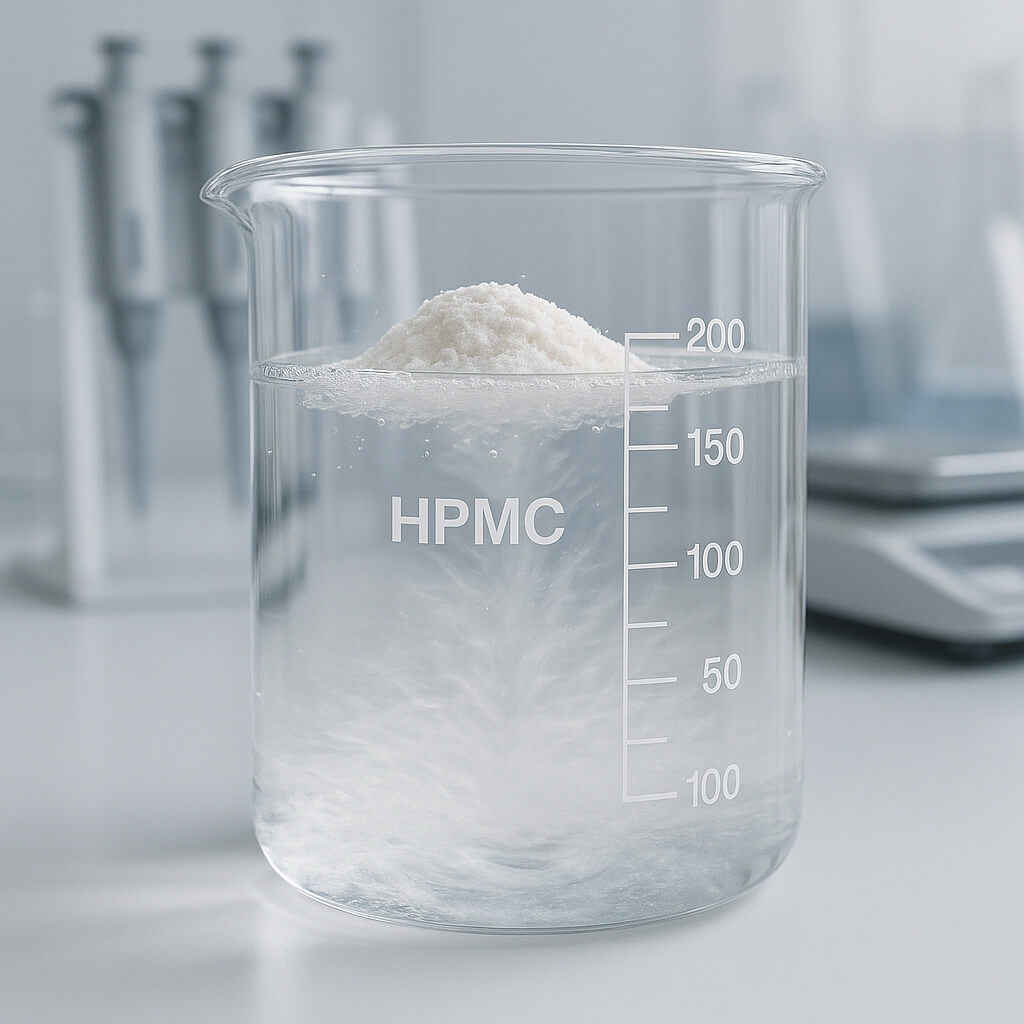Hydroxypropyl Methylcellulose (HPMC) K100LV has gained extensive recognition as a preferred thickening agent across various industries. The capabilities of HPMC K100LV make it an indispensable component in formulations for pharmaceuticals, food products, and cosmetics. This article aims to delve into the multifaceted uses of HPMC K100LV, exploring its benefits, applications, manufacturing processes, and trends impacting its popularity. In doing so, we will address the concerns and questions that decision-makers in industrial sectors may have about integrating HPMC K100LV into their products.

1. What is HPMC K100LV?
HPMC K100LV is a water-soluble polymer derived from cellulose, a naturally occurring material. But here’s the kicker: HPMC K100LV is particularly valued for its unique thickening and gel-forming properties. These characteristics make it extraordinarily versatile, enabling its use in diverse applications ranging from pharmaceuticals to food products.
To understand HPMC K100LV, one must first consider its chemical structure. Through a chemical reaction known as etherification, methyl and hydroxypropyl groups are introduced into the cellulose structure, transforming it into this functional polymer. The modifications significantly alter the molecular behavior of cellulose, enhancing its ability to dissolve in cold water while forming viscous solutions that are key to many formulations.
Historically, HPMC has been employed since the early 1900s, but its acceptance in various industries surged in recent decades as the demand for effective and safe thickening agents grew. Its properties—such as odorlessness, tastelessness, and non-toxic nature—further enhance its appeal, allowing it to serve crucial roles without compromising the quality of end products.
HPMC K100LV’s ability to provide consistent viscosity is essential, particularly in industries where formulation stability is vital for product integrity. As industries continue to evolve, HPMC K100LV remains a cornerstone ingredient guiding the development of innovative products while catering to health and safety requirements.
| Parameter | Details |
|---|---|
| Chemical Composition | Hydroxypropyl methylcellulose |
| Solubility | Water-soluble at various temperatures |
| Application Versatility | Pharmaceuticals, food, cosmetics |
2. Why Is HPMC K100LV Preferred in Industrial Applications?
In industrial applications, the choice of thickening agents can significantly influence product performance. What’s the real story? HPMC K100LV stands out among competing options due to its reliable performance, wide-ranging applicability, and cost-effectiveness.
One primary reason HPMC K100LV is preferred is its superior water retention ability. This characteristic assists in maintaining product texture and consistency, critical for various formulations. For instance, in pharmaceuticals, it prevents the sedimentation of active ingredients, ensuring even dosage in liquid preparations. Similarly, in the food industry, HPMC K100LV can enhance the mouthfeel of sauces and dressings, achieving a desirable creamy texture without compromising flavor.
Moreover, HPMC K100LV is compatible with various excipients, making it easy to incorporate into diverse formulations. Its ability to stabilize emulsions ensures that oil and water components do not separate, a common challenge in many food and cosmetic products. In comparison to other thickening agents such as xanthan gum or guar gum, HPMC K100LV does not impart undesirable flavors and maintains the integrity of the product’s sensory profile.
Economic considerations also play a significant role in this preference. HPMC K100LV is often more cost-effective than alternative agents, and its efficiency allows manufacturers to use smaller quantities while still achieving desired viscosities. Furthermore, its properties enable formulators to create stable products that have longer shelf lives, thus reducing waste and improving profitability.
By ensuring the reliability of products in the competitive industrial market, HPMC K100LV proves to be an invaluable asset in formulation strategies, solidifying its position as a preferred choice among industrial applications.
| Industrial Application | Benefit of HPMC K100LV |
|---|---|
| Pharmaceuticals | Enhances stability and dosage uniformity |
| Food Products | Improves texture and prevents separation |
| Cosmetics | Stabilizes emulsions without altering flavors |
3. How Does HPMC K100LV Function as a Thickening Agent?
Understanding the mechanism by which HPMC K100LV acts as a thickening agent is crucial for manufacturers looking to optimize their formulations. This is where it gets interesting: HPMC K100LV enhances the viscosity of solutions primarily through the incorporation of water molecules into its polymer chains, leading to the creation of a gel-like structure.
When HPMC K100LV is dispersed in water, the polymer chains begin to swell and hydrate, forming a three-dimensional network that traps water molecules. This network is responsible for increasing the viscosity of the solution—resulting in a thickened product that can maintain its stability over time. The degree of thickening can vary based on the concentration of HPMC K100LV used and the specific formulation characteristics, allowing for tailored viscosity levels as needed.
In addition to its thickening functionality, HPMC K100LV also acts as a stabilizer, ensuring that products remain homogeneous throughout their shelf life. This action is particularly important for suspensions and emulsions, where consistent texture is crucial for quality. For instance, in the production of syrup solutions, HPMC K100LV assists in preventing the settling of solids, promoting a uniform mixture and enhancing consumer acceptance.
Furthermore, the level of viscosity achieved can influence other parameters like flow behavior and the rate of release for active ingredients. In topical formulations, HPMC K100LV aids in the controlled release of substances, which can enhance therapeutic effectiveness.
As companies strive for innovative and effective formulations, understanding how HPMC K100LV functions as a thickening agent can provide valuable insights into optimizing product performance across various applications.
| Mechanism | Effect on Formulation |
|---|---|
| Swelling and Hydration | Increases viscosity |
| Three-Dimensional Network | Stabilizes mixtures |
| Influencing Flow Behavior | Improves product application and usability |
4. What Industries Benefit from Using HPMC K100LV?
A broad range of industries benefits from using HPMC K100LV due to its versatile characteristics. Ready for the good part? Primarily, pharmaceuticals, food, and personal care industries harness the benefits of HPMC K100LV to enhance product integrity and performance.
In the pharmaceutical industry, HPMC K100LV serves as a crucial excipient in formulations for tablets, capsules, and liquid medications. Its ability to control the release of active ingredients results in improved bioavailability, making medications more effective. Companies benefit significantly from using HPMC K100LV to maintain drug stability, ensuring that therapeutic effects are both reliable and sustained over time.
The food industry greatly values HPMC K100LV for its thickening properties. It is commonly found in various products, including sauces, dressings, and frozen desserts. Here, HPMC K100LV not only enhances mouthfeel and consistency but also acts as a stabilizer, improving shelf life and overall product quality. For example, in low-fat or no-fat products, manufacturers use HPMC K100LV to replicate the creamy texture typically provided by fats, meeting consumer demand for healthier alternatives.
In personal care, HPMC K100LV is found in a variety of formulations ranging from lotions to gels. Its capacity to form stable emulsions means that cosmetic products maintain their texture while providing effective application and hydration benefits for users. This reliability is critical in a market where consumer preferences are influenced by product performance.
Overall, HPMC K100LV’s versatility ensures its widespread application across key industries, catering to distinct formulation needs while enhancing product efficacy and consumer satisfaction.
| Industry | Applications of HPMC K100LV |
|---|---|
| Pharmaceuticals | Used in tablets, capsules; improves stability and release |
| Food | Found in sauces, dressings; enhances texture and shelf life |
| Personal Care | Used in lotions, gels; stabilizes emulsions for smooth application |
5. What Are the Advantages of HPMC K100LV Over Other Agents?
When it comes to selecting a thickening agent, various factors come into play, particularly in terms of performance, cost, and safety. What’s the real story? HPMC K100LV provides distinctive advantages over other thickening agents, making it a top choice in multiple applications.
One significant advantage is that HPMC K100LV is non-toxic and considered safe for consumption and topical applications. Unlike some synthetic alternatives, this natural polymer poses minimal health risks, making it suitable for sensitive populations, including children and individuals with allergies. This characteristic is critical for industries like food and pharmaceuticals, where safety standards are paramount.
Another notable aspect of HPMC K100LV is its versatility in forming stable emulsions and suspensions. In comparison to other agents such as guar gum or xanthan gum, HPMC K100LV offers a more neutral taste and odor, ensuring that the sensory attributes of the final product remain undistorted. This feature is essential in food applications, where flavor integrity is vital.
Cost-effectiveness is another key consideration when comparing thickening agents. HPMC K100LV often proves to be more economical, as less material is needed to achieve desired viscosities. By offering consistent performance at a lower cost, manufacturers can enhance profitability while still delivering high-quality products.
Lastly, HPMC K100LV’s compatability with a wide range of formulations makes it an ideal choice for many applications. It can be easily blended with other ingredients, simplifying the manufacturing process and lowering production costs.
Overall, these advantages reinforce HPMC K100LV’s prominence in the marketplace, making it an indispensable component in the production of effective, safe, and cost-efficient products.
| Comparison Factor | HPMC K100LV | Other Agents |
|---|---|---|
| Toxicity | Non-toxic and safe | May contain allergens |
| Sensory Impact | Neutral taste and odor | Can alter flavors |
| Cost-Effectiveness | Often requires lower quantities | Typically needs higher amounts |
| Compatibility | Blends easily with other ingredients | Varied compatibility |
6. How Is HPMC K100LV Manufactured?
The manufacturing process of HPMC K100LV is complex and involves precise chemical techniques. This is where it gets interesting: the process begins with the extraction of cellulose from natural sources such as wood or cotton, which serves as the foundational raw material for HPMC K100LV production.
The next step involves the etherification of cellulose. In this stage, cellulose is treated with chemicals, specifically an alkaline solution, which facilitates the incorporation of hydroxypropyl and methyl groups into the molecular structure, transforming cellulose into HPMC. The careful control of this reaction is critical, as it directly influences the molecular weight and viscosity of the resulting polymer.
Following etherification, the HPMC undergoes a drying and granulation phase to create a powdery form that is easier to handle and utilize in formulations. Quality control is paramount at this stage, where various tests measure the viscosity, purity, and particle size of the HPMC K100LV. These measures ensure that the final product meets the stringent demands of diverse industries.
Companies often look for suppliers that adhere to Good Manufacturing Practices (GMP) and ensure rigorous testing throughout the manufacturing process. This commitment to quality enhances the reliability of HPMC K100LV as an ingredient and assures manufacturers of its consistent performance in formulations.
By understanding the manufacturing process of HPMC K100LV, businesses can better appreciate the complexities involved and make informed decisions when sourcing this essential ingredient.
| Manufacturing Step | Description |
|---|---|
| Raw Material Extraction | Source cellulose from natural fibers |
| Etherification | Introduce hydroxypropyl and methyl groups to cellulose |
| Quality Control | Testing for viscosity and purity |
7. What Are the Typical Formulations Using HPMC K100LV?
The versatility of HPMC K100LV allows it to be used in various formulations across industries. Ready for the good part? Pharmaceutics, food products, and cosmetics all leverage the unique properties of HPMC K100LV to improve the quality and performance of their offerings.
In the pharmaceutical realm, HPMC K100LV is extensively utilized in the production of controlled-release tablets and capsules. Here, it acts as a binding agent, ensuring that active ingredients are released at a consistent rate, thereby enhancing bioavailability. Formulations such as oral suspensions also benefit from HPMC K100LV, which helps maintain the even distribution of active ingredients throughout the liquid.
The food industry utilizes HPMC K100LV in an array of formulations, including sauces, dressings, baked goods, and dairy products. For instance, when added to salad dressings, HPMC K100LV provides a creamy texture while stabilizing emulsions, preventing separation over time. Similarly, it offers a mouthfeel enhancement in gluten-free baked goods by mimicking the properties traditionally derived from gluten.
In cosmetics, HPMC K100LV is integral to a variety of products such as lotions, creams, and gels. For example, it’s often included in facial creams to improve the viscosity and stability of emulsions, facilitating better application and enhancing user experience. HPMC K100LV helps develop products that remain aesthetically pleasing while performing effectively.
Companies can leverage the benefits of HPMC K100LV across these diverse formulations, yielding high-quality products that satisfy consumer demands and expectations.
| Formulation Type | Role of HPMC K100LV |
|---|---|
| Pharmaceuticals | Binds and stabilizes active ingredients |
| Food Products | Enhances consistency and mouthfeel |
| Cosmetics | Improves stability and application |
8. How Can Companies Effectively Use HPMC K100LV?
To harness the full potential of HPMC K100LV, companies should adopt effective strategies during the formulation process. What’s the real story? Proper usage can significantly enhance product quality and performance.
First, choice of the appropriate grade of HPMC K100LV is essential. Different grades possess varying viscosities and functionalities suited to specific applications. For example, manufacturers must select a grade based on their desired viscosity requirements and the type of product being formulated. Conducting tests in the early stages can help identify the most suitable grade to achieve optimal results.
Next, prehydration is a crucial step when integrating HPMC K100LV into formulations. Allowing HPMC K100LV to hydrate fully before use can help achieve smoother consistencies and prevent clumping during mixing. Incorporating it into formulations requires a tailored mixing approach to ensure even distribution for consistent product performance.
Testing and optimization enhance the application of HPMC K100LV. Manufacturers should routinely assess their formulations for stability, viscosity, and overall functionality, making adjustments as necessary to meet desired specifications. Employing trial-and-error processes in formulation development can identify the ideal concentrations and input methods.
Lastly, keeping abreast of industry trends is invaluable. Engaging in ongoing research and development activities can help manufacturers discover innovative applications for HPMC K100LV, aligning with changing consumer preferences and market demand.
By utilizing these effective strategies, companies can ensure the successful integration of HPMC K100LV into their formulations, optimizing product performance and enhancing customer satisfaction.
| Best Practice | Description |
|---|---|
| Grade Selection | Choose the right viscosity grade for specific applications |
| Prehydration | Allow HPMC K100LV to fully hydrate before use |
| Continuous Testing | Assess formulations for stability and performance |
9. What Trends Are Driving the Demand for HPMC K100LV?
The demand for HPMC K100LV is influenced by various trends within multiple industries. This is where it gets interesting: one of the most prominent trends is the increasing consumer preference for natural and plant-based ingredients.
As consumers become more health-conscious, there is a growing expectation for products that emphasize safety and quality. HPMC K100LV, being derived from natural cellulose, aligns perfectly with this trend. Companies are leveraging its properties to develop products that cater to wellness-focused consumers, particularly in food and personal care sectors.
Sustainability is another key trend that drives demand for HPMC K100LV. Companies seek eco-friendly and biodegradable ingredients for formulations, and HPMC K100LV fits the bill. As industries increasingly shift toward sustainable practices, manufacturers are focusing more on sourcing and using biodegradable materials that have lower environmental impacts.
Technological advancements also play a role in enhancing the use of HPMC K100LV. Innovations in formulation processes and product development are leading to novel applications, especially in pharmaceuticals and personal care. For instance, the ability to create highly effective controlled-release formulas has revolutionized the pharmaceutical landscape and spurred the demand for HPMC K100LV.
Engaging with these trends allows manufacturers to stay ahead of the curve, addressing evolving consumer preferences while maintaining competitiveness in the marketplace. HPMC K100LV will remain instrumental in shaping product innovations that align with these emerging trends in various sectors.
| Trend | Impact on Demand for HPMC K100LV |
|---|---|
| Natural Ingredients | Increase in use for health-conscious products |
| Sustainability | Demand for eco-friendly and biodegradable options |
| Technological Advancements | Innovative applications enhancing market potential |
10. Where Can Companies Source Quality HPMC K100LV?
Sourcing high-quality HPMC K100LV is essential for businesses aiming to maintain product integrity and performance. What’s the real story? Finding a reputable supplier requires careful consideration of several factors.
First, manufacturers should look for suppliers that adhere to Good Manufacturing Practices (GMP). This guarantees that the HPMC K100LV has been produced under high-quality standards, ensuring that the ingredient is safe and effective for use in formulations. Verifying certifications and quality assurance measures is crucial in confirming the reliability of the supplier.
Second, companies should consider suppliers with a history of consistent performance and reliable delivery schedules. Assessing supplier reviews, case studies, and their track record can provide valuable insights into their operations and the consistency of their products.
Moreover, engaging suppliers who offer technical support can be beneficial. Quality suppliers not only provide the product itself but also assist with formulation questions and challenges. This support can lead to improved product development and better outcomes when using HPMC K100LV in specific applications.
Lastly, participating in industry trade shows and expos can help establish connections with potential suppliers and allow companies to see product demonstrations. These events often provide opportunities to learn about new developments and innovations in the market.
By focusing on these sourcing strategies, businesses can ensure they find reliable suppliers of HPMC K100LV, helping them maintain the quality and effectiveness of their formulations.
| Sourcing Factor | Considerations |
|---|---|
| Compliance with GMP | Ensures product safety and quality |
| Supplier Reliability | Historical performance and delivery track record |
| Technical Support | Assistance with formulation challenges |
FAQ Section
Q1: What is HPMC K100LV?
HPMC K100LV is a water-soluble cellulose derivative commonly used as a thickening and stabilizing agent in various industries, including pharmaceuticals, food, and cosmetics.
Q2: How does HPMC K100LV function as a thickening agent?
HPMC K100LV functions by absorbing water and swelling, creating a gel-like network that increases the viscosity of solutions and stabilizes emulsions.
Q3: What industries benefit from using HPMC K100LV?
Industries such as pharmaceuticals, food manufacturing, and personal care benefit from HPMC K100LV due to its versatility, safety, and effectiveness in enhancing product formulations.
Q4: How is HPMC K100LV manufactured?
HPMC K100LV is manufactured through etherification of cellulose, followed by careful processing to achieve specific viscosity and performance characteristics.
Q5: Why is HPMC K100LV preferred over other agents?
HPMC K100LV is preferred due to its non-toxic nature, versatility across formulations, cost-effectiveness, and its ability to maintain the sensory attributes of products without altering flavors.




